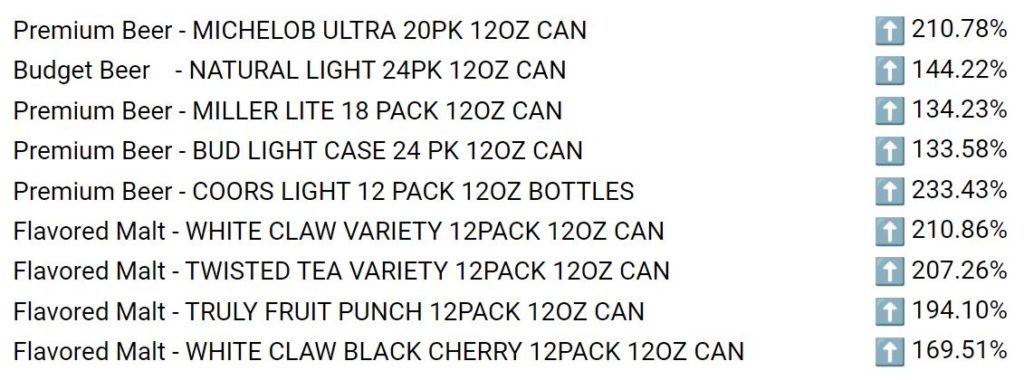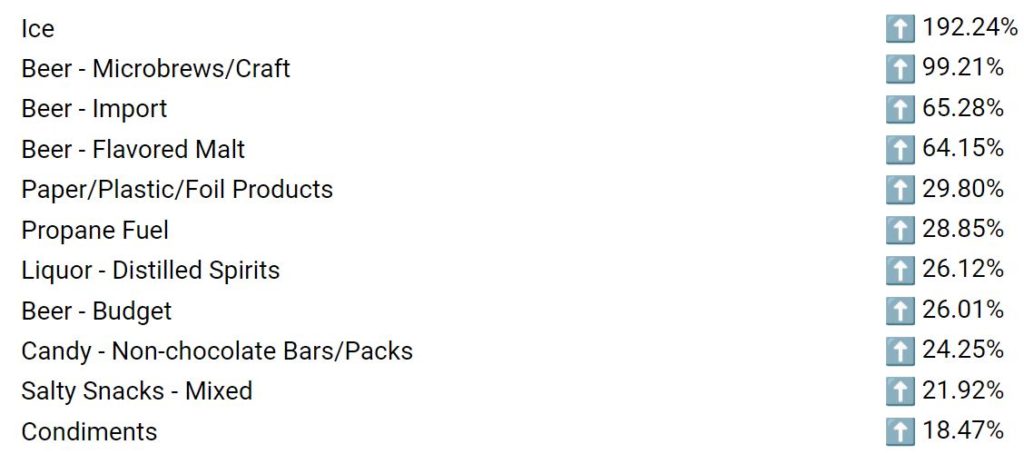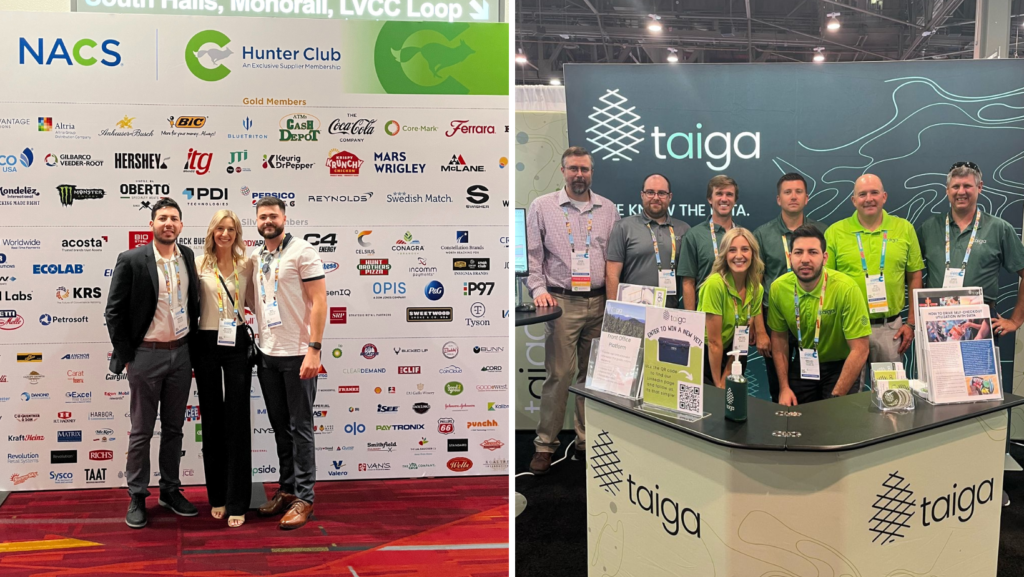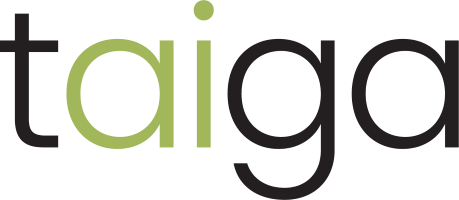2022 in Review
How 1 System Can Increase Your Front-Office Technology ROI
In the second installment of our two part article series with NACS Daily, we wanted to show you a better way to cohesively manage your enterprise with one system.
Click the link below to read about our Front Office Platform and how it can drive revenue, increase profits and improve customer satisfaction for your c-stores.
How One System can Increase your Front Office Technology ROI
Why You Should Shift Back-Office Spend to Front-Office Solution
On the heels of what we saw at the 2022 NACS Show, we decided to write about the importance of a Front Office Platform! There were multiple conversations, sessions, and education around the point that data is an essential part of your business and the importance of a data strategy. But the question unanswered was, how can you organize, categorize, and analyze all of your data the easiest way possible?
Click the link below to read the first installment of a two-part NACS Daily series on why convenience retailers should prioritize front-office technology spend!
Why You Should Shift Back-Office Spend to Front-Office Solutions
Convenience Retailers now have a Real-Time Price Optimization Solution
On the rare occasions that I actually take a golf lesson, the pros always talk about consistently hitting the ball with the “sweet spot” on the club face. “When you find that sweet spot, the ball will fly further, straighter, and higher while landing softer.” Then they show me a picture of some famous golfer’s five iron with a worn spot the size of a dime right on the “Sweet Spot.” I’ve searched for that Sweet Spot a long time and I’m growing more and more certain that it is just a marketing myth to sell more golf clubs. But just because I can’t break 90 doesn’t mean that you can’t improve your margins by finding the Sweet Spot for your product pricing.
For convenience retailers, pricing products in the Sweet Spot that maximizes margins while maintaining unit sales is anything but a myth – good store operators have done it for years. But recently keeping prices aligned has become a major headache because Covid, gas price gyrations and inflation are causing those elusive price Sweet Spots to jump around more frequently. To make matters worse, your suppliers are increasing their prices more often, and cutting into your margins every month.
If you tried to keep up with this on a manual spreadsheet, you could overwhelm your staff and still run out of time, leaving heaps of money on the table. You can’t just ignore these changes, because customers are pinched for cash and growing more price sensitive. If they notice significant differences between you and your competition, they may decide that your stores are charging too much, which could change their behavior for a long time to come.
The science behind finding the pricing Sweet Spot for each product is called Price Optimization. The good news is that a real-time front-office platform can automate all of the manual analysis, making very accurate pricing suggestions and even send them out as real-time alerts, whether you are trying to raise prices while maintaining sales volume or raise prices while maximizing gross profit.
Taiga is well positioned, with its real-time Front Office Platform, to provide a solution to retailers looking to perform rapid Price Optimization. Again, Taiga has collaborated with its clients to develop a scalable system that can measure price elasticity for every product at every store in real-time. With the addition of Price Optimization to your front-office platform, you will be able to price your products in the sweet spot a lot sooner than I will become a scratch golfer.
If you didn’t have a chance to read our article from last week about the difference between front-office and back-office systems, click here. I think it will give you a new perspective on your technology and help you prioritize your next investment as we head into 2023.
Why Convenience Store Retailers are Prioritizing Front Office Technology
I always look forward to this time of year when the Summer is fading, football returns and Austin may finally get some cooler weather. Fall also includes the NACS conference where many of us will be visiting Las Vegas to learn about and discuss new trends and technologies in the industry. In that context, I wanted to highlight a technology transformation that has begun to occur in the c-store industry – the adoption of Front-Office Technology.
For decades now, the primary technology used by convenience store operators has been Back-Office software. This category of software was introduced when the c-store industry was undergoing its first “Technology Transformation”. Back-office systems were developed to replace pencil and paper by automating accounting and administrative processes like the end of month reporting, inventory control, tax preparation and reconciliation. These systems make use of batch imports of historic data from your POS to report on what happened in the past. The ROI from back-office systems is derived from automating manual processes and reducing the amount of time team members needed to perform those tasks. These systems have been improved over time, but they are generally considered “legacy” systems because they were originally developed on older technology that is difficult to enhance.
The convenience store market is now in-the-midst of its second major Technology Transformation which is being driven by the adoption of Front-Office Technology. Front-office technology includes forward-looking products that have been designed specifically to drive revenue, increase profit and improve customer satisfaction. Generally speaking, front-office technologies have the potential to deliver a much larger ROI than back-office automation.
As we have been preparing for our trip to NACS and talking with our clients and prospective clients alike, it has become clear that convenience retailers have identified the need for front-office technology. After experiencing so much disruption and change over the last few years, they have realized the systems that they have in place were not adequate to keep up with the pace of change. Some of these retailers have even made significant investments into their front-office but they have ended up with partial solutions that would require an enormous effort to tie together.
Taiga has developed the c-store industry’s first comprehensive Front-Office Platform. Our entire organization has been carefully designed to be the foundation of your Front-Office strategy. We provide complete solutions to your challenges like: Price Optimization, Promotion Analysis and real-time operational alerts – just to name a few. We’re also proud to be an open system and we offer real-time integration with any of your other technologies so you can consolidate everything into a single Platform.
To learn more about Taiga’s Front-Office Platform, and how you could generate a much greater ROI from your technology, please feel free to contact us.
c
Measuring the Success of Self-Checkout Investment
For some reason over the last few months I have found myself at the grocery store with my wife close to a dozen times. Usually, we go to the store to purchase the groceries needed to prepare for dinner that night. We do these small trips so often that we’re always trying to get in and out quickly. The first couple of times, we made our way to the Self-Checkout (SCO) line and found it to be the most inconvenient experience. The “friction” – the industry term for difficulty checking out – that we experienced has made using the SCO line a serious gamble when compared to waiting for the cashier. Issues we have encountered include:
• SCO systems are not ideal for shoppers using reusable shopping bags
• Starting to checkout before putting a bag on the scale
• Scanning the next item before fully bagging the previous item
• Not enough space on the basket or bagging scale
• Buying alcohol and having to wait for the attendant to come approve the transaction
My wife blames the issues on the two-person involvement (me) and now I stand three feet away from her while she completes the transaction. Regardless, it has not been a seamless process and we both perform a massive mental calculation that involves the length of the lines at the cashiers, average speed of cashier lines at this store, the fullness of the baskets in line ahead of us, the length of the line for self-checkout and whether or not we have alcohol in our basket. All of these factors weigh into our choice of which line to enter and our overall customer experience at a given store.
I share this story because here at Taiga many of our clients and prospects are either using or exploring some form of SCO. Vendors promise big ROI from reduction in labor costs and increased customer satisfaction. As we have worked with our clients to help them measure and analyze their ROI, it is no surprise that customer utilization is the key factor. What is surprising is the disparity in utilization rates across our clients. We have some clients who are successfully driving over 30% of their in store transactions through SCO while others are down in the single digits. SCO vendors would like you to think that it is a result of the slick technology and pleasing design of their products; however, we have learned that savvy operators have combined their implementations with our analytics and operational strategies to influence that mental math calculation that determines whether customers choose to use SCO.
The operators driving their utilization over 30% view their SCO as a process for ongoing improvement, not a one and done investment of a new system that is left to sink or swim. They watch the performance of certain metrics that we have helped them identify where and how they can improve utilization. Examples of some of the metrics they look at include:
- Self-Checkout Utilization – This metric answers the question “Are customers using the SCO?” It is a baseline that tracks the percentage of total in store transactions completed through SCO.
- Long-Term Customer Adoption – This number answers the question “Are customers
using SCO again?” It tracks the number of customers that have fully adopted SCO and whether you are trending upward or down. - SCO Product Mix Analysis – This report answers the questions “What products do customers buy via SCO and how are they different from the product mix being purchased from your cashier?” “Are they afraid of age-restricted purchases?” “Are my promotions that drive customers to SCO working?”
- Customer Traffic Analysis – This helps you understand “What time of day is SCO used most often and what other traffic patterns seem to be influencing SCO utilization?” This analysis is the key to optimizing labor costs while improving customer satisfaction at the same time.
Successful operators combine the information from these metrics with other operating decisions to refine and improve the SCO experience on an ongoing basis. They may use promotions to get customers to try SCO or, more importantly, adopt it as their preferred checkout method. The ability to measure the performance of the technology and the choices customers are making is as critical to the success of the SCO investment as the selection of the technology itself.
If you would like to understand how Taiga partners with our clients to provide the ability to track and improve the performance of their SCO investment, please contact us. We would be happy to share our experience with you and walk you through the capabilities of our product.
c
Using Real-Time Data to Navigate Inflation and Price Volatility
How Convenience Store Operators can Successfully Navigate High Inflation
In 2020, we were all thinking that the disruption caused by the pandemic was a once in a lifetime event. Since then, we have dealt with supply chain issues, a massive labor shortage, wildly volatile fuel prices and the highest inflation in over 40 years.
The average price of unleaded fuel in the United States reached $4.32 per gallon this week, an increase of 47% over the same time a year ago. The inflation rate in April was reported to be 8.3% according to the Bureau of Labor Statistics. Unfortunately, we’re all aware that the cost of many products like eggs, milk and ground beef have increased by significantly more.
Over the last two years, Taiga has partnered with our clients to identify actionable and strategic ways for them to succeed despite these disruptions. Conquering the latest challenges due to price inflation is no different.
In this environment, having access to your data in real-time can mean the difference between running at a profit or a loss. Here are four examples of questions that our real-time data can help answer and how Taiga is helping c-store operators navigate these challenges successfully:
- Identify New Trends In Your Customers’ Behavior
- If previous periods of stress are an indicator, we can assume that alcohol consumption will increase. Will convenience stores see another surge in alcohol sales as customers cut spending at bars and restaurants? Will they purchase their beverages at convenience stores to save money by drinking at home?
- Some customers are beginning to shift from high end products to price performers. Which categories, sub-categories and brands are experiencing the biggest shift? How should your product mix and space allocation change to capitalize on this trend?
- As customers become more price sensitive, how is that affecting the take rate on your promotions? How should you adapt your promotion strategy to remain profitable?
- Identify Where Your Margins are Being Squeezed
- How quickly can you detect when individual SKUs become unprofitable because the cost of the product has increased but your retail price hasn’t changed?
- Can you automatically alert staff members to the need to update prices when this happens?
- Analyze Customer Traffic
- Is your fuel to in-store conversion rate increasing, decreasing, or staying the same in this inflationary environment?
- How are your peak store hours changing as consumers shop differently? How should your staffing be adjusted to maximize customer experience and profitability?
- Forecast Future Demand
- Can you accurately predict consumer demand and incorporate external factors like the weather forecast to optimize your business?
- Predictive forecasts can have a massive impact on the profitability of your food service. Do you know exactly how many items to prepare each morning? What other changes might you make if you had an accurate sales forecast?
It is a challenge to operate in this environment where supply chains are disrupted, labor costs are increasing, fuel prices are unstable, and inflation is running out of control. The only way to regain control of your future is to change your business strategy from being reactive to being data-driven and proactive. Once you start to analyze your data, you will quickly realize that you had been unaware of the best opportunities to adapt and improve the performance of your business.
Our goal at Taiga is to partner with our clients by providing access to actionable data straight from their stores in real-time. This enables them to become more agile and respond within minutes rather than wasting valuable staff time trying to pull complicated and incomplete reports out of their back office. As you can see in the examples above, the amount of information and analysis that is available to our clients in real-time is game changing and those four examples are just the tip of the iceberg.
We would love to show you more of our Front Office System capabilities. Please contact us to schedule a demonstration at your convenience.
Weekend Data Trends From America’s Biggest Football Event
Real-Time Trends from The Big Game
We are licking our wounds here at Taiga’s Cincinnati HQ. As lifelong Bengals fans, it was a heartbreaking loss but we still believe that Joe Burrow can lead us back next season. Now that the game is over, we decided to share some valuable insights into the performance of beer and salty snacks that occurred over the weekend. These are just a few examples of what StoreKeep can produce in real-time.
In alcoholic beverages, large pack domestic beer and seltzers drove to big growth as shoppers stocked up for their big game parties.

In salty snacks, tortilla chips led the forward momentum in growth as customers picked up their favorite scooping and dipping snacks.

Several categories came off the sidelines ready to play with ice, candy and propane making big contributions. Below are the major growth moves in the NACS categories from the big game.

The data provided above is just the tip of the iceberg in terms of the insights that we can unlock once installed at your stores. Going forward, we plan to share more analysis and trends in our newsletter each week. If you have a specific type of analysis that you would like to see, please feel free to email a request. If you would like to learn more about how StoreKeep can give you better access to analytics like the information above, please contact us as we would love to tell you more.
Convenience Store Operators Need Partners, Not Vendors
The Real Difference Between a Partner and a Vendor…
Studies have shown that technology is advancing so rapidly a software company could recreate the same product today that they developed 10 years ago with 1/5th of the effort and the market will bear 1/5th of the original price. This is a great illustration of the pressure every software company is under to continually improve their offerings and deliver more value. Most successful software companies have one key trait in common: they focus on continuing to provide the greatest value to their customers over the lifespan of their relationship and Taiga is no different.
The idea of technology that could perform these tasks sounds great in theory, but most retailers are well aware of how difficult it is to get accurate and actionable reporting Unlike a traditional software vendor, some companies view their clients as partners rather than customers and have strategies in place to ensure that this partnership is the cornerstone to a much greater relationship. Understanding how a company manages their customer relationships is a great indicator of the ROI that you can expect to receive after purchasing their products. Here are two things to look for when considering a new software company:
Does the Company Help You Realize Measurable Results in Your Business?
Here at Taiga, when we kick off a new project, we work with our clients to establish goals and track performance to make sure these goals are being accomplished. For one of our clients whose goal was to improve foodservice margins by reducing waste, we focused some of their education on our food preparation forecast in StoreKeep. Then we established metrics to measure their success that they could watch in real-time. Within just two months, this client had improved their foodservice margins by 10%.
Does the Company Listen to Their Customers and Continually Upgrade and Enhance Their Product Based on Feedback?
Our platform, StoreKeep, is “versionless,” which means we have all of our clients running on the most up-to-date version of our product at all times. When we launch a new enhancement, it automatically goes out to everyone so you will never have to pay more for a “premium version”. Over the long-term, a “versionless” software platform like StoreKeep will generate incredible value for our partners because it requires much less effort to enhance and support. This is the opposite of a traditional vendor that charges for custom development and has to support dozens of different versions of their product in the field.
We know that our clients are the best source for new ideas so we have a process for carefully collecting those ideas and working them into our development schedule. For example, we recently had a client suggest that we create a dashboard for tracking which product margins are being squeezed due to price inflation. We were able to turn this request around in about two weeks and not only did we solve the problem for that client, but several others also thanked us when we announced the new enhancement to the rest of our partners.
I hope these examples have given you some things to think about and helped you see how different the experience is when you work with a company that views itself as your partner as opposed to your vendor. Partners recognize the need to build a lasting relationship that continually provides more value thanks to the contributions from the company and its clients.
If you’re interested in learning how Taiga could partner with your company and help you achieve your goals, just contact us. It will be well worth your time.



